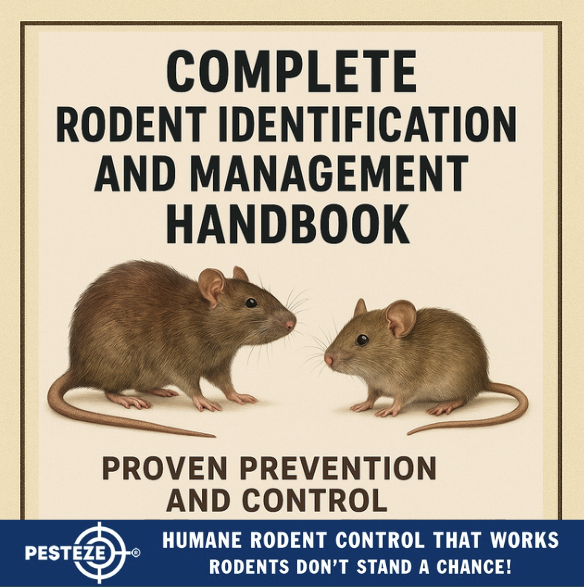COMPLETE RODENT IDENTIFICATION AND MANAGEMENT HANDBOOK

COMPLETE RODENT IDENTIFICATION AND MANAGEMENT HANDBOOK
SUMMARY
Rodents cause structural damage, contaminate food, and spread harmful diseases in homes and businesses. Learn how to identify different rodent species and apply proven management methods—including sanitation, exclusion, and traps—for effective long-term control.
FEATURES
-
Accurate Identification: Spot the signs of common rodents like rats and mice.
-
Sanitation Practices: Reduce food and water sources to make spaces less attractive.
-
Exclusion Methods: Seal cracks, vents, and openings to block rodent entry.
-
Trapping Solutions: Use snap traps, glue boards, and live traps for targeted removal.
-
Rodent-Proof Storage: Store food and waste in sealed, chew-proof containers.
-
Integrated Pest Management (IPM): Combine prevention and control for lasting results.
GUIDE DESCRIPTION
Rodents are among the most destructive household and commercial pests, causing costly damage and posing significant health risks. From gnawing through electrical wiring to contaminating food supplies with droppings and urine, rodents can quickly escalate from a minor nuisance to a serious infestation if not addressed promptly. This handbook provides a step-by-step approach to rodent identification and management to help you take control.
Accurate identification is the first step in managing rodents effectively. Common culprits include house mice, Norway rats, and roof rats, each with unique behaviors and habitats. For example, Norway rats tend to burrow and nest in basements, while roof rats prefer attics and upper floors. Recognizing droppings, gnaw marks, or greasy rub trails can also help pinpoint the species and extent of an infestation.
Sanitation plays a critical role in rodent control. Eliminating access to food, water, and shelter greatly reduces the chances of attracting rodents. Simple steps such as promptly cleaning up spills, securing trash bins, and reducing clutter indoors and outdoors can make your property far less appealing to pests.
Exclusion, or rodent-proofing, is equally essential. Rodents can squeeze through gaps as small as a quarter inch, so sealing entry points with steel wool, caulk, or metal flashing is a must. Pay attention to doors, windows, vents, and utility lines where rodents often gain access.
When prevention measures aren’t enough, trapping provides a targeted way to reduce populations. Snap traps are effective for mice, while larger traps can handle rats. Place them along runways, near droppings, or against walls where rodents commonly travel. Always use bait that rodents are currently feeding on, such as peanut butter, seeds, or dried fruit, for better results.
Rodent-proof storage further supports management efforts. Store food in airtight containers made from metal or thick plastic, and keep outdoor garbage sealed to prevent access. Combined with regular monitoring and integrated pest management strategies, these methods offer long-term protection.
By implementing these identification and management practices, you can safeguard your property, protect your health, and prevent recurring infestations in a safe and sustainable way.
- Aahna Barma


Comments 0